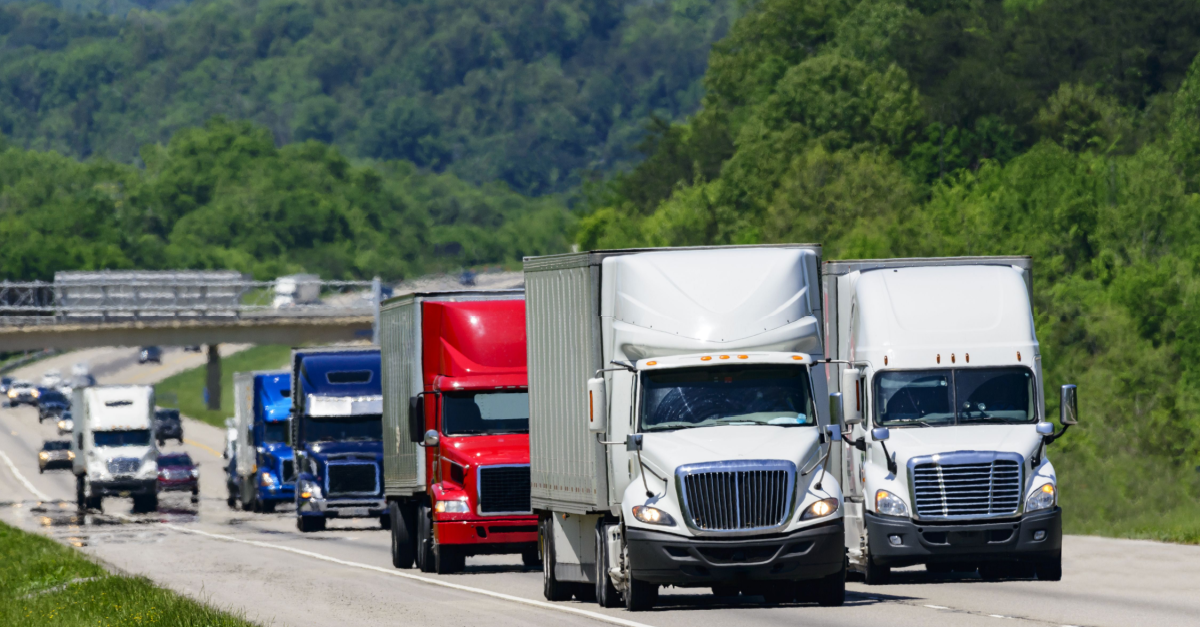Truck Emissions 101: What are Supply Chain Carbon Offsets?
 Maria Callegari
July 06, 2023
Maria Callegari
July 06, 2023

We find ourselves in a pivotal moment in the fight against climate change, where every stride towards a greener future holds huge significance. Presently, the transportation industry stands as a significant contributor to global greenhouse gas emissions (GHG). In the United States alone, the transportation sector is responsible for a staggering 27% of the country's total GHG emissions. For humans to survive and thrive, substantial transformations in transportation methods and efficiency are needed.
While some companies are ahead of the curve in reducing GHG emissions, the imperative to lower these emissions will soon extend to the financial success of all transportation companies in the United States. New legal proposals are emerging to closely regulate the GHG emissions of transportation companies. For instance, the US Securities and Exchange Commission has introduced a new bill that seeks to mandate climate-related disclosures. If passed, the bill would require public companies to share financial data pertaining to climate change and disclose public filings on GHG emissions within their supply chain.
As regulatory pressure mounts, shippers are actively seeking ways to curb emissions while maintaining their bottom line. Many are turning to supply chain carbon offsets.
What are Supply Chain Carbon Offsets?
Given the absence of technology enabling completely carbon-less transportation at present, the most convenient avenue for companies to attain carbon-neutral shipping is through supply chain carbon offsets. By purchasing 'carbon credits' from entities engaged in carbon-sequestering initiatives, such as tree-planting projects, companies can finance endeavors that extract an equivalent amount of carbon from the atmosphere as their annual emissions, thereby establishing an effectively carbon-neutral business.
For example, let's consider a shipping company that is aware of its annual carbon footprint of 1,000 pounds. To offset emissions, they can invest in carbon credits offered by a cooperative of coffee farmers in Nicaragua who are actively planting shade trees and legumes amidst their coffee trees. Assuming each tree sequesters approximately 50 pounds of carbon from the environment in one year, the company can purchase enough carbon credits to neutralize their emissions, thereby supporting the planting of 200 trees within those farms. In subsequent years, the company can continue to procure additional credits from the farmers, as their trees consistently absorb 1,000 pounds of carbon annually.
Three Steps to Going Green: How to Take Advantage of Carbon Offsets for Shipping
As consumers grow increasingly aware of the environmental consequences associated with our supply chains, the demand for climate-conscious practices is steadily rising. We anticipate a continuous surge in the demand for carbon-neutral shipping, and early adopters who meet these requirements will succeed in the market.
Build an Understanding of Emissions
The first step towards implementing carbon offsets involves assessing your company’s carbon footprint. This undertaking is not as straightforward as it may initially seem, primarily due to Scope 3 emissions. Unlike more easily quantifiable factors such as emissions from your own fleet of trucks, Scope 3 emissions encompass all emissions generated the entire lifespan of the product being transported.
For example, if your trucks are moving pallets of cotton t-shirts produced in Bangladesh, your Scope 3 emissions include not only the emissions from your trucks during delivery of the shirts but also the emissions generated by the tractors and fertilizers used to grow the cotton. The transportation emissions from moving the cotton to the market and subsequently to the factory, as well as the emissions and potential pollutants stemming from the manufacturing process of converting cotton into thread and weaving it into cloth. This complexity highlights the challenge of accurately accounting for all emissions within your supply chain. However, it is crucial to do so. By some estimates, Scope 3 emissions account for an average of 75% of a company’s greenhouse gas emissions.
Businesses and transportation experts are working together to make Scope 3 emissions more measurable by sharing resources and information.
Find a Trustworthy Provider of Carbon Offsets for Shipping
When you’re ready to invest in carbon offsets, it is crucial to ensure the legitimacy of your offset provider. As the significance of product carbon emissions grow in the eyes of consumers, certain unscrupulous companies emerged, seeking to exploit the demand for genuine impact.
The term “Greenwashing” refers to the practice of some companies using sustainability-focused marketing tactics to create an impression of greater sustainability than they genuinely possess. Unfortunately, some offset providers do not genuinely invest in concrete carbon offsets; rendering their services ineffective in achieving the desired results. . Therefore, it is essential to conduct thorough research and verify that your chosen offset provider is genuinely committed to the transformative change you aim to accomplish.
Choose a Sustainability Minded Transportation Partner
Making sustainability-minded decisions does not require sacrificing good business practices. Opting for a transportation provider that prioritizes sustainable practices can assist you in both transforming your climate impact and fostering your overall success. By aligning your business with a transportation provider committed to sustainability, you can effectively navigate the intersection of environmental responsibility while supporting your businesses success.
Get The Most Supply Chain Visibility with Edge Logistics
If you are seeking a trusted partner to enhance the traceability and reduction of your supply chain emissions, look no further than Edge Logistics. Renowned for our commitment to sustainability, Edge Logistics continually advances our suite of tools to offer shippers visibility and carbon offset solutions. Our recent collaboration with Cloverly enables shippers to achieve emissions reduction targets while maximizing cost savings. Take the first step towards sustainable shipping by requesting a quote from Edge Logistics today.
About the Author


